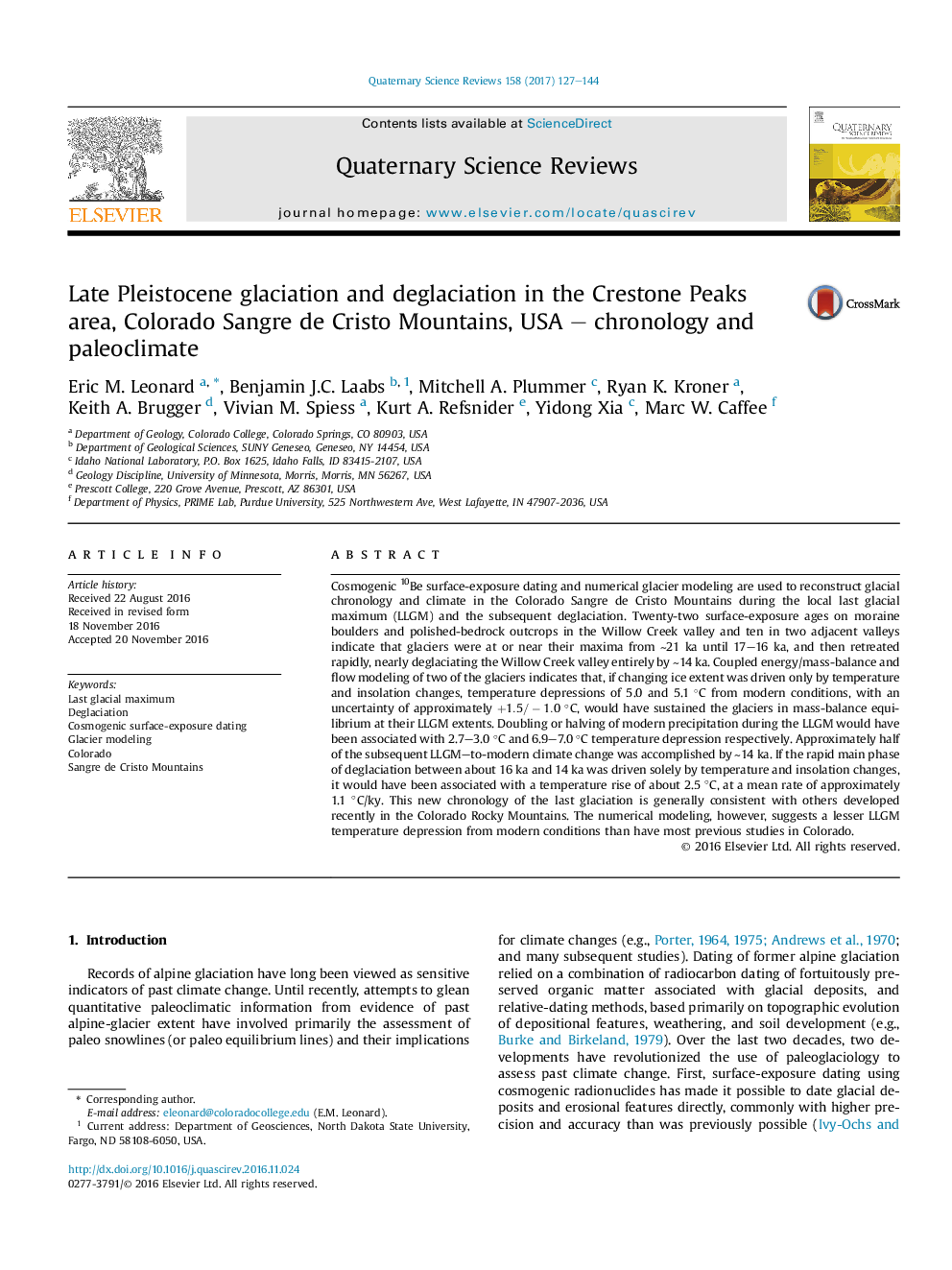| کد مقاله | کد نشریه | سال انتشار | مقاله انگلیسی | نسخه تمام متن |
|---|---|---|---|---|
| 5786823 | 1640777 | 2017 | 18 صفحه PDF | دانلود رایگان |
عنوان انگلیسی مقاله ISI
Late Pleistocene glaciation and deglaciation in the Crestone Peaks area, Colorado Sangre de Cristo Mountains, USA - chronology and paleoclimate
دانلود مقاله + سفارش ترجمه
دانلود مقاله ISI انگلیسی
رایگان برای ایرانیان
کلمات کلیدی
موضوعات مرتبط
مهندسی و علوم پایه
علوم زمین و سیارات
زمین شناسی
پیش نمایش صفحه اول مقاله

چکیده انگلیسی
Cosmogenic 10Be surface-exposure dating and numerical glacier modeling are used to reconstruct glacial chronology and climate in the Colorado Sangre de Cristo Mountains during the local last glacial maximum (LLGM) and the subsequent deglaciation. Twenty-two surface-exposure ages on moraine boulders and polished-bedrock outcrops in the Willow Creek valley and ten in two adjacent valleys indicate that glaciers were at or near their maxima from â¼21 ka until 17-16 ka, and then retreated rapidly, nearly deglaciating the Willow Creek valley entirely by â¼14 ka. Coupled energy/mass-balance and flow modeling of two of the glaciers indicates that, if changing ice extent was driven only by temperature and insolation changes, temperature depressions of 5.0 and 5.1 °C from modern conditions, with an uncertainty of approximately +1.5/â1.0 °C, would have sustained the glaciers in mass-balance equilibrium at their LLGM extents. Doubling or halving of modern precipitation during the LLGM would have been associated with 2.7-3.0 °C and 6.9-7.0 °C temperature depression respectively. Approximately half of the subsequent LLGM-to-modern climate change was accomplished by â¼14 ka. If the rapid main phase of deglaciation between about 16 ka and 14 ka was driven solely by temperature and insolation changes, it would have been associated with a temperature rise of about 2.5 °C, at a mean rate of approximately 1.1 °C/ky. This new chronology of the last glaciation is generally consistent with others developed recently in the Colorado Rocky Mountains. The numerical modeling, however, suggests a lesser LLGM temperature depression from modern conditions than have most previous studies in Colorado.
ناشر
Database: Elsevier - ScienceDirect (ساینس دایرکت)
Journal: Quaternary Science Reviews - Volume 158, 15 February 2017, Pages 127-144
Journal: Quaternary Science Reviews - Volume 158, 15 February 2017, Pages 127-144
نویسندگان
Eric M. Leonard, Benjamin J.C. Laabs, Mitchell A. Plummer, Ryan K. Kroner, Keith A. Brugger, Vivian M. Spiess, Kurt A. Refsnider, Yidong Xia, Marc W. Caffee,